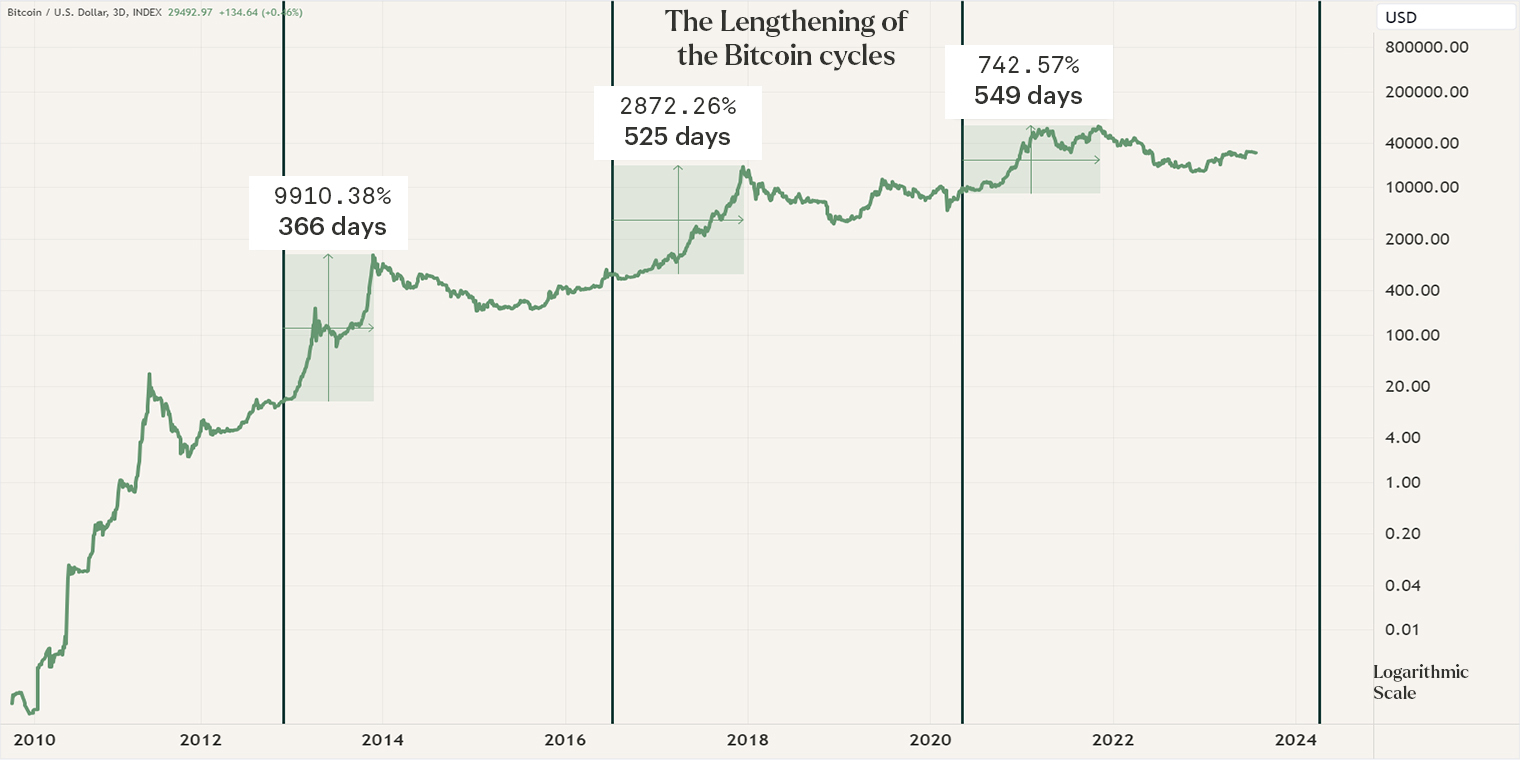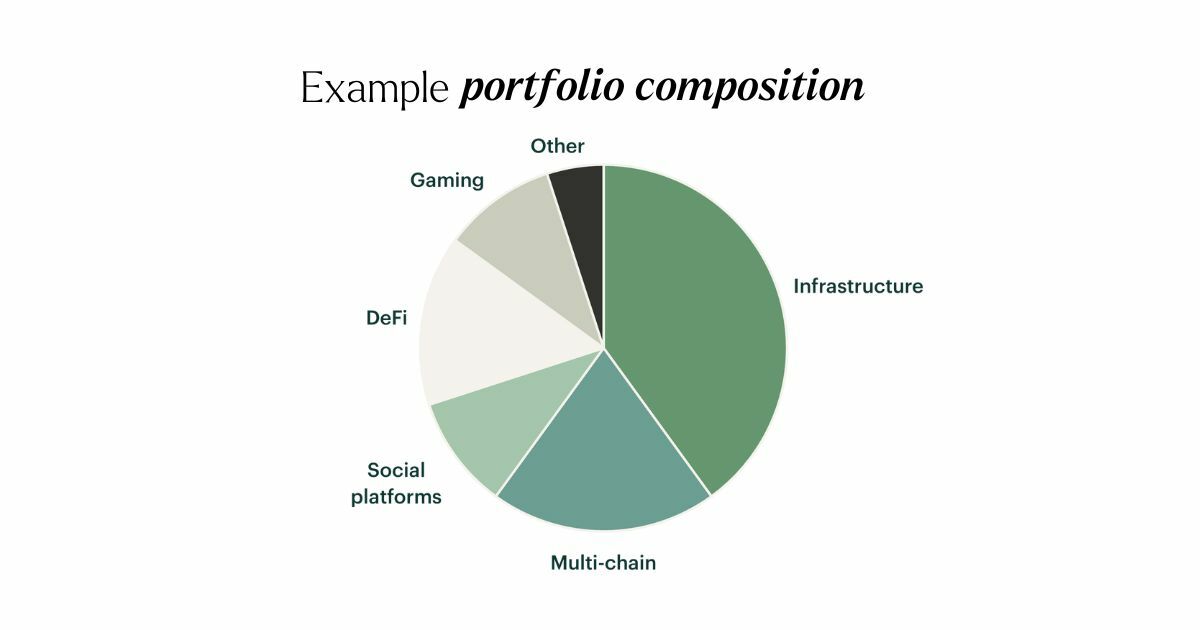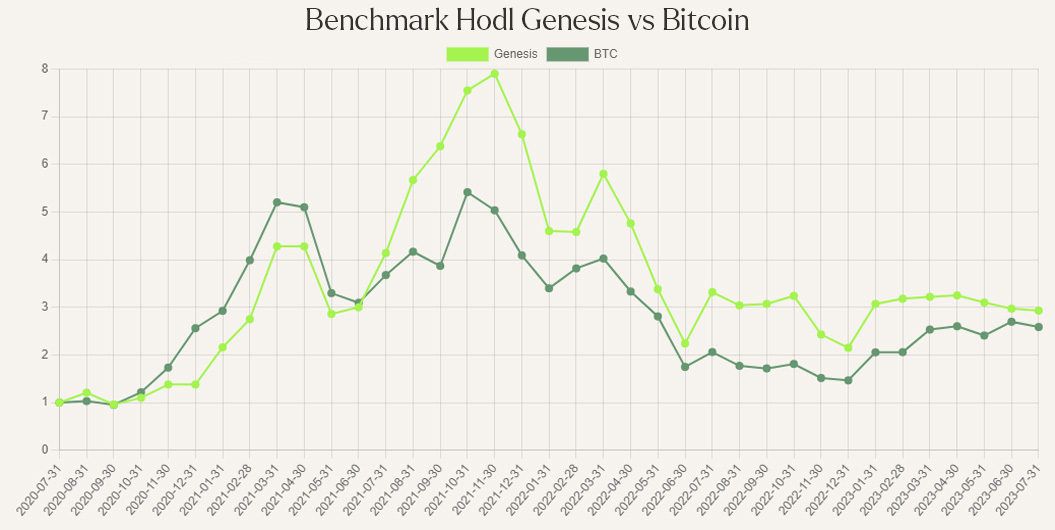Digital Assets: Investing in Bitcoin vs a diversified portfolio
- Diversifying your portfolio with Bitcoin
- Diversifying your portfolio with a selection of digital assets
- Comparing the two strategies Bitcoin vs diversification
- Diversification is key
Over the past two decades, the digital assets industry has evolved from a single asset into a sprawling ecosystem, encompassing diverse implementations and applications. With the introduction of all these cryptocurrencies, the investment opportunities have increased exponentially. Many investors, however, start by diversifying with just Bitcoin. In this article we would like to dive deeper into the different investment methods and what is optimal for your investment portfolio: diversifying with Bitcoin or a bigger selection of digital assets.
Diversifying your portfolio with Bitcoin
Bitcoin was the first digital asset to be introduced in the market and has paved the way for other assets to enter the industry. Due to its first-mover advantage and unique features, Bitcoin has the largest market capitalization and acts as a benchmark for the market. There is a close correlation between the price movements of Bitcoin and the overall digital asset market, therefore some investors choose to invest solely in Bitcoin. This investment strategy provides some substantial advantages. For one, the strategy is rather simple to implement as the investors don't have to research any of the other projects, which makes it suitable for newcomers. It also poses less risk as it has the biggest market capitalization.
A widely adopted approach to Bitcoin investing is the practice of dollar-cost averaging (DCA). In this strategy, investors systematically invest at regular intervals, such as monthly, gradually building their positions. This method not only allows for the gradual accumulation of Bitcoin but also provides the advantage of reducing the average cost during market downturns. It stands out as one of the most conservative strategies available, focusing on the dominant asset and employing a consistent investment schedule that disregards market fluctuations.

However, while this strategy is known for its lower risk profile, its trade-off lies in yielding comparatively modest returns. Furthermore, a closer examination of previous bull markets reveals a trend of decreasing volatility in Bitcoin cycles, characterized by lesser gains in terms of percentages. This shift is the result of increased participation and sustained presence of investors in the market, mitigating the impact of sudden user influxes.
Diversifying your portfolio with a selection of digital assets
As aforementioned, the digital assets market comprises thousands of cryptocurrencies, offering investors the opportunity to construct a well-diversified portfolio. Diversification brings forth several benefits, including the capacity to establish a robust base through established assets like Bitcoin, while also facilitating engagement in higher-return investments through smaller allocations. If done correctly, the portfolio carries a lower overall risk while offering the potential for notably greater gains.
Additionally, diversification empowers investors to position themselves within sectors that a sole focus on Bitcoin investment might not provide, such as investments in the Decentralized Finance sector. If investors conduct enough research and are knowledgeable in the industry, they will be able to construct a portfolio that preserves its value during market decline and grows as the market experiences an upward trajectory. However, as we mentioned, this strategy is quite complex and takes longer periods of research and even then mistakes can easily be made due to the enormous developments within the space.

Luckily, there are various solutions for creating a well-diversified portfolio. One of these solutions is the index fund. This fund is managed by an asset manager and typically invests in the biggest assets in terms of market capitalization, for example, the top 25. It’s a simple approach that doesn’t take an enormous amount of expertise but can create some moderate returns. The benefit for fund managers is that they only need to decide on the percentages they want to allocate to those 25 assets. The downside, however, is that they also are required to invest in projects in the top 25 they don’t stand by.
Next to an index fund, there are additional strategies such as an Actively Managed Fund. These funds structure their diversified portfolio based on the research by a team of analysts. This creates an opportunity as the investments can be made in a broader spectrum than the top 25. This offers the investors of the fund exposure to a well-diversified investment portfolio, without the need to have deep market knowledge or spend hours doing research. These funds often have a minimum investment amount of €100.000,-.
Comparing the two strategies Bitcoin vs diversification
When looking at the two different strategies, there are a couple of clear pros and cons. For the sole focus on Bitcoin, it’s a very easy approach and can generate “modest” returns while gaining exposure to the digital assets market. Through a simple DCA strategy, even a newcomer can lower its overall entry level, possibly creating a more favorable position when positive sentiment in the market returns For the more conservative investors, it’s probably the most attractive investment strategy as it invests in the current, leading digital asset. However, it’s debatable whether the Bitcoin investment strategy really provides exposure to the entire industry. Furthermore, as we look back to previous cycles, we see that returns in Bitcoin decrease as the asset increasingly matures, lengthening its value cycles.
Creating a well-diversified portfolio may require more expertise than solely investing in Bitcoin, however, it lowers the overall risk of a portfolio while generating higher returns when done correctly. Furthermore, it provides investors with true exposure to the digital assets industry as multiple sectors can be integrated. However, doing it yourself comes with some challenges.

We can compare a solely Bitcoin investing strategy versus a diversification strategy by using the Hodl Genesis Fund as a benchmark. The Hodl Genesis Fund is actively managed and consists of a diversified digital assets portfolio and was launched on the 31st of July 2020. After three years, the fund has outperformed Bitcoin by ~25%, illustrating the strength of a diversified portfolio. At its highest point, Genesis had over 50% higher returns than a Bitcoin-portfolio.
Diversification is key
Economic Nobel laureate Harry Markowitz famously said that diversification is the only free lunch in investing, and we most certainly agree. Adding Bitcoin to a traditional 60/40 portfolio is a form of diversification, however, why solely invest in gold when you can invest in a commodity index? This logic extends to the digital assets market as well. While Bitcoin has demonstrated remarkable performance over the past decades, the realm of digital assets offers more than just Bitcoin. With an optimal composed digital assets portfolio, an investor can even lower the amount of risk while generating higher returns.
Adding a well-composed digital assets portfolio to a traditional portfolio offers an additional layer of diversification. Curious about what digital assets can bring to your portfolio? Book an appointment to discuss the possibilities and find a strategy that aligns with your investment profile.
Sign up for our newsletter to stay on top of the crypto market.


